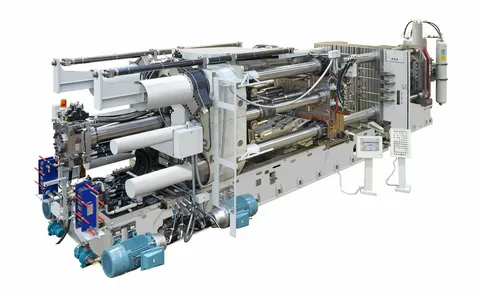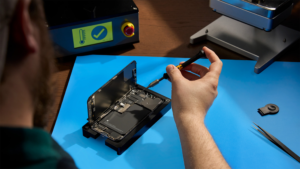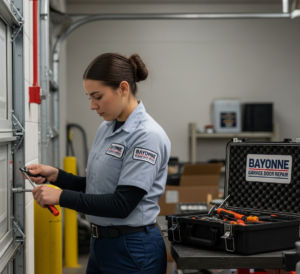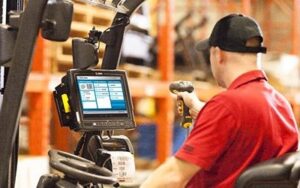How High Pressure Die Casting Supports Sustainable Manufacturing
High pressure die casting (HPDC) is an innovative and highly efficient manufacturing process that supports the goals of sustainable production in many industries. This process involves injecting molten metal under high pressure into a mold cavity, creating complex parts with high precision and minimal waste. By optimizing material use, energy consumption, and recyclability, high pressure die casting contributes to environmental, economic, and operational sustainability. This article explores how high pressure die casting supports sustainable manufacturing by examining its resource efficiency, energy-saving capabilities, contribution to lightweight product designs, waste reduction, and recyclability.
High Pressure Die Casting: A Resource-Efficient Manufacturing Process
High pressure die casting offers significant advantages in terms of resource efficiency. In HPDC, the molten metal is injected into a mold at high pressure, allowing for the creation of intricate and high-quality parts with minimal material use. By reducing the need for additional machining or post-processing, HPDC minimizes the material required for production, which is particularly valuable for metals that are costly or energy-intensive to produce, such as aluminum and magnesium. This resource efficiency plays a significant role in making HPDC a sustainable choice for manufacturers looking to lower their raw material consumption.
Furthermore, HPDC’s precision and ability to produce complex shapes reduce the need for additional assembly parts. As a result, manufacturers can streamline their designs and lower the demand for extra materials and resources. This efficiency aligns with sustainable manufacturing goals, as it reduces the environmental footprint associated with resource extraction, processing, and transportation. The minimized use of materials and reduced production waste exemplify HPDC’s role in fostering a circular economy in manufacturing.
Energy Efficiency in High Pressure Die Casting Processes
High pressure die casting is known for its energy efficiency compared to other metal-forming processes. Because the process allows for rapid production cycles and produces parts that often require minimal post-processing, it significantly reduces the energy needed per unit of production. In comparison to other methods like sand casting or forging, HPDC’s energy-efficient nature makes it an attractive option for manufacturers focused on lowering their carbon emissions. This is especially beneficial in industries where large-scale production of metal components is required, such as automotive and aerospace.
Additionally, advancements in HPDC technology have introduced methods for heat recovery, improved furnace efficiency, and optimized production processes, which further contribute to reducing overall energy consumption. By integrating energy-efficient practices, manufacturers using HPDC can minimize their operational costs while aligning with global sustainability goals to reduce greenhouse gas emissions. Thus, the energy-saving potential of high pressure die casting supports sustainable manufacturing by helping companies to reduce their environmental impact.
Lightweight Design and Sustainability with High Pressure Die Casting
High pressure die casting plays a key role in producing lightweight components, which contributes to sustainability in industries such as automotive and aerospace. The ability of HPDC to create thin-walled, high-strength parts allows manufacturers to produce lighter components without compromising quality or durability. Lightweight parts are particularly important in the automotive sector, where reduced vehicle weight directly contributes to improved fuel efficiency and decreased emissions. By leveraging HPDC for lightweight designs, manufacturers can create products that support sustainability goals throughout their lifecycle.
Furthermore, the precision and strength provided by HPDC allow for the use of alternative materials like aluminum and magnesium, which are lighter than traditional steel but maintain durability. As industries continue to shift towards lightweight materials to reduce energy use and emissions, HPDC remains at the forefront of enabling sustainable product design. The ability to produce strong, lightweight components aligns with the broader trend toward sustainability-focused manufacturing practices, particularly in sectors looking to reduce their carbon footprint.
Reducing Waste and Scrap in Manufacturing through High Pressure Die Casting
Waste reduction is a critical aspect of sustainable manufacturing, and high pressure die casting is instrumental in minimizing waste generation. HPDC’s precision ensures that parts are made to exact specifications with minimal errors, which translates to less scrap material and lower rejection rates. This accuracy is achieved through precise control over temperature, pressure, and mold design, leading to parts that require little to no additional machining. By reducing scrap and rework, HPDC supports lean manufacturing principles and helps manufacturers save on material costs.
The process of HPDC also allows for the reuse of molds and recycling of excess metal, further contributing to waste minimization. Instead of discarding rejected parts or leftover material, manufacturers can remelt and reuse scrap metal, thereby keeping waste to a minimum. This recycling capability not only conserves resources but also lowers the demand for raw materials, which is beneficial from an environmental perspective. As waste reduction becomes a priority in sustainable manufacturing, HPDC offers a viable solution for companies aiming to minimize their ecological impact.
Recyclability and Environmental Benefits of High Pressure Die Casting
One of the most significant sustainability advantages of high pressure die casting is its compatibility with recyclable materials. Metals commonly used in HPDC, such as aluminum, zinc, and magnesium, are highly recyclable, which makes the process environmentally friendly. By using recycled metal, manufacturers can reduce the energy required for primary metal extraction and processing. This contributes to a reduction in carbon emissions and conserves natural resources, as recycled materials require less energy to process than virgin metals. This recyclability aspect is crucial for sustainable manufacturing, where closed-loop systems are increasingly prioritized.
Moreover, high pressure die casting’s reliance on recyclable metals enables industries to create products with a reduced environmental footprint throughout their life cycle. Components made through HPDC can be easily melted down and repurposed at the end of their usable life, promoting a circular economy where resources are continuously reused. This reduces waste and minimizes the need for mining and raw material extraction, aligning HPDC with global sustainability goals. As recycling and environmental responsibility become more vital in manufacturing, high pressure die casting stands out as a process that contributes meaningfully to sustainable industry practices.
In conclusion, high pressure die casting supports sustainable manufacturing by optimizing resource and energy efficiency, enabling lightweight designs, minimizing waste, and promoting recyclability. By adopting HPDC, manufacturers can meet the demands of a rapidly evolving market that prioritizes environmentally friendly practices, reduced carbon emissions, and responsible resource use. As industries continue to pursue sustainability, high pressure die casting is expected to play an increasingly significant role in helping companies achieve their environmental and economic goals.













Post Comment